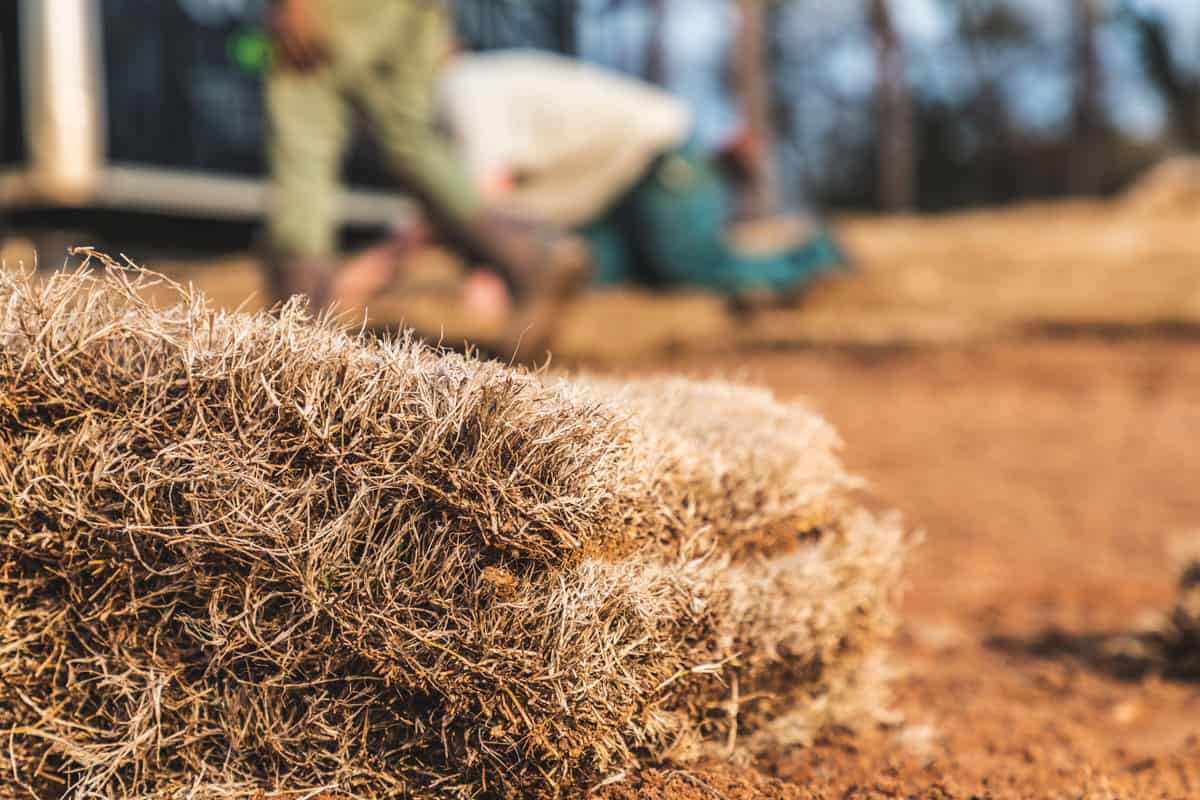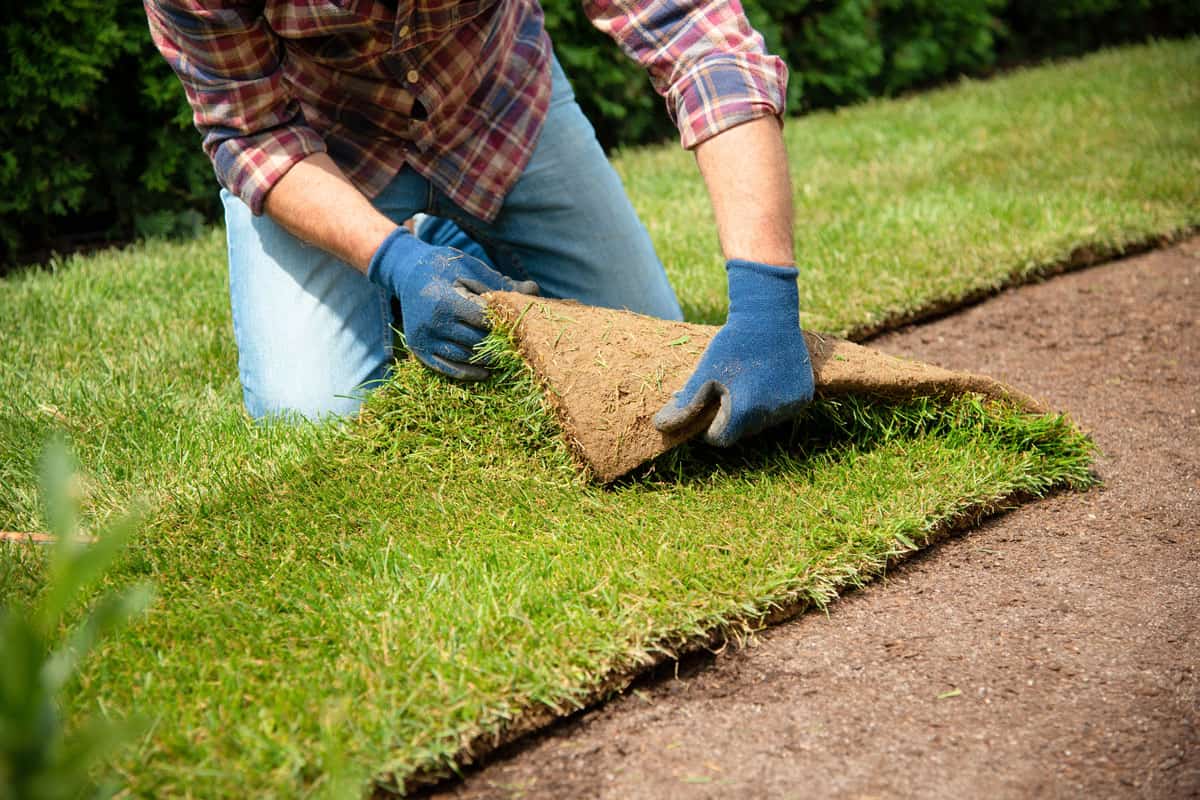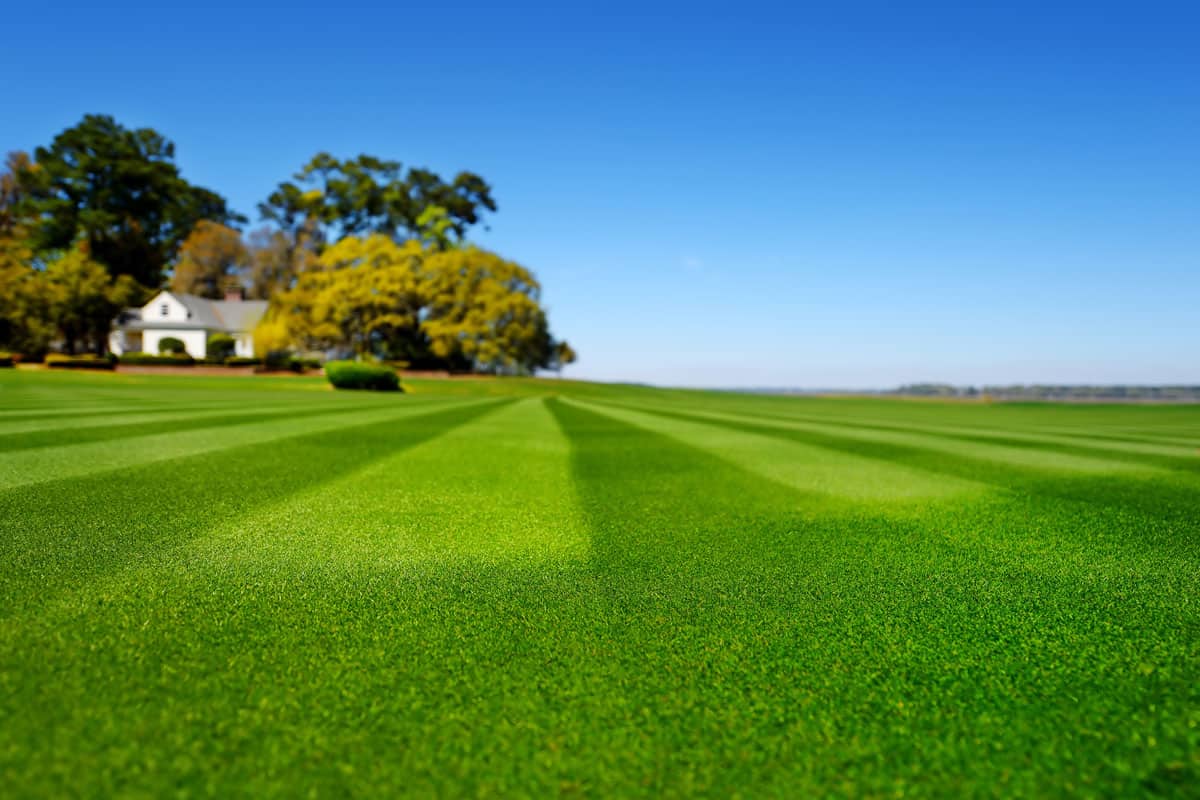Caring for your lawn can take time and plenty of effort. Suppose you have new sod you recently laid down, and you're wondering if you need to overseed. Will spreading new seeds on your fresh sod make a positive difference? What does overseeding do?
Luckily, we've researched this question extensively and have the answers below.
If you recently laid down sod and want to overseed, this can sometimes be helpful. For example, if your new sod is already thin in some sections or dying, overseeding can help fill it out and improve its overall look.
However, if your new sod looks healthy and doesn't have thinning or dead sections, there's not much need to add more seeds to the soil.
As we start this article, we will cover all things sod and discuss whether you should overseed on new grass. If your lawn needs a bit of TLC, you haven't laid down sod before, or you need other tips and tricks: we're here to assist. With that said, let's dive right into this topic!
Do You Need To Overseed New Sod?

Not always. Gardeners choose to overseed new sod mainly to fill in patches that might be thin or dying. Since your sod is likely still adjusting to the new soil, throwing more seeds onto it won't always be necessary or helpful.
As we said, the best time for this is if your lawn becomes patchy. Most new sod will be full and green, as it's essentially squares of pre-grown grass.
Therefore, we don't see the point in overseeding a healthy lawn (sod or not). You also want to remember that too many seeds fighting for nutrients in the ground can cause unwanted competition.
When this happens, sections of once-healthy lawns can die off, leaving bare soil behind. So, unless your new sod is having trouble growing, we don't recommend overseeding right away.
Sometimes it's better to let your sod have a minute to settle in, even if that means less-full sections.
What Can I Put On My New Sod To Make It Grow?
![Perfectly striped freshly mowed garden lawn in summer, Should You Overseed New Sod? [And When To Do This]](https://gardentabs.com/wp-content/uploads/2023/01/1Should-You-Overseed-New-Sod-And-When-To-Do-This.png)
One of the best things you can do for new sod is to add a slow-release nitrogen fertilizer. However, experts recommend waiting until your new sod has been laid for six weeks before fertilizing.
A benefit of using fertilizer on newer sod is that it's packed with nutrients. Since sod is transplanted grass, it can sometimes lack certain nutrients it would have had if you grew it from seed.
Therefore, applying a slow-release nitrogen product to the ground can help even things out. Sod, although beautiful and easy to install, can be tricky.
Sometimes, your new grass will not respond well to the new ground, which can be frustrating. As we mentioned, you want to give your new sod time to settle and adjust.
After six weeks, apply fertilizer and treat the grass as you usually would.
The last thing your new sod needs is an excessive amount of product or aggressive mowing/seeding.
When Should You Overseed Sod?

When it comes to the right time for overseeding sod, we recommend waiting until the fall. Most experts will suggest a late summer or early-mid fall overseeding, although in most climates: fall weather is best.
We say this because sod responds better to seeds as the weather cools down. Furthermore, your grass seedlings will enjoy the cooler temperatures and should be able to make their way into the ground.
The one thing you want to avoid when overseeding sod is waiting until it's too hot or too cold. Try and have your weather conditions as moderate as possible when you do this.
According to Ryan Turf, the early fall provides your new seeds with optimum germination and growth.
As long as you give your sod and seeds fertilizer, water, and moderate temperatures right as you overseed, everything should be able to settle in before the colder winter.
You also want to factor in that many types of grass go into dormancy as December hits. As the temperatures drop to freezing levels, your lawn will turn brown and won't be growing until the spring.
What Does Overseeding Do?
For anyone confused about what overseeding is, think of this as planting grass seed directly into existing turf without tearing it up or messing with it.
Overseeding is when you use a spreader to distribute X amount of seeds over a lawn. You will typically see this happen in the fall or late summer. When overseeding, you encourage new blades of grass to emerge from the ground as the weather improves.
Therefore, some gardeners will wait to do this until spring, although it's best to let your new seedlings settle in the fall and go dormant through winter.
For example, if your sod is dying in certain sections and you want to fix it without a mess: overseeding is your best choice. Doing this won't disturb the grass and will fill out the problematic section(s).
So, we recommend overseeding if you don't want to necessarily rip out your dead or sick grass but still need to fix it. Pennington recommends overseeding 45 days before the first frost of winter/fall, so keep that in mind.
Can I Overseed On Dead Sod?

Yes! One trick to getting your lawn back to growing full and green is overseeding. As we said before, applying new grass seeds to an unhealthy lawn can help change its appearance and growing pattern.
Many lawn experts recommend doing this rather than tearing up the dead grass, as it's less invasive. Sometimes, grass can't keep growing as usual.
You want to add a better variety for your climate or use the same type but spread it thicker over the sod. Remember, sod can take a few weeks to settle in, so don't feel the need to have it look perfect immediately.
For example, if you laid down sod meant for a warmer climate but are in Michigan or Wisconsin, we recommend overseeding with cool-weather grass this second time.
Not all grass can grow everywhere you want it to. Sod, like regular turf, can't withstand certain climates depending on its type, meaning you need to research before purchasing.
Again, try and overseed with the new grass in the early fall or late summer, roughly 45 days before the first frost of the year.
Can You Bring Back Dead Sod?
Unfortunately, there isn't usually a way to revive dead sod. However, you can bring your lawn back to being lush and green by replacing your sod or overseeding.
In general, the sod will die if it grows in the wrong climate or is plagued by disease. Some landscape pros recommend tearing up your dying or dead sod and replacing it once the weather is warm.
On the other hand, other landscapers choose to overseed the dead sod and let the new blades of grass take over the property. Therefore, there are a couple of ways to handle this.
One thing to remember is that once sod dies completely: it won't ever come back. Of course, grass will typically go through winter dormancy, so don't panic if your lawn turns brown through that period.
You only need to worry about your sod if it's mid-spring and the ground is still brown and patchy. That will indicate something went wrong, and you need to overseed. Grass doesn't live forever.
What Is The Best Way To Install New Sod?

If the time comes to lay down new sod, you want to gather the following materials:
- Measuring tape
- A rototiller
- A rake/broom
- Fertilizer
- A lawn roller
- Your hose/sprinkler
- Fresh soil
- A lawn edger
- A soil tester
- Boots (weatherproof)
- Eye and ear protection
- Pants and gloves
Once you have everything ready for the installation:
- Test your current soil and grass with a moisture/pH meter. Well-aerated soil will have more acidity.
- Measure the area you plan to lay down fresh sod with your tape measure. Write the dimensions down, so you don't make mistakes when purchasing the new grass.
- Grab your rototiller and use it to loosen the ground to a depth of 6-8 inches till in a few inches of organic matter (this helps with aeration for the new sod.
- Use your rake or shovel to level the ground.
- Water your soil no later than 48 hours before the sod installation.
- Lay down your first row of sod, staggering each piece.
- Use small pieces of sod to fill in the leftover empty sections of your lawn.
- Use a lawn edger to cut the sod around irrigation or other important areas.
- Fill in seams using topsoil.
- Finish your sod install by rolling the ground with a lawn roller and pushing the roots into the soil.
After you finish these ten steps, water your fresh sod and apply a lawn starter if needed!
Installing Sod Tutorial
Here's a video showing the above steps from The Home Depot's official YouTube channel. This entire process shouldn't be too challenging, and if you need any of the equipment we listed, The Home Depot rents a lot of it out.
To Wrap It All Up

Whether you need to lay down fresh sod or already have, it's always good to plan on overseeding. We found that you don't need to overseed healthy, growing sod, although this can be crucial for dead sections or patchiness.
Generally, overseeding is only necessary if there's an issue with your existing sod/lawn. Therefore, don't feel required to lay fresh seeds down right after installing your new sod.
Sod needs time to adjust to its new home, so apply a lawn starter and fertilize after around six weeks.
And while we have your attention, check out these helpful related garden posts below!
How Long After Tilling Can You Lay Sod Or Plant Grass?
